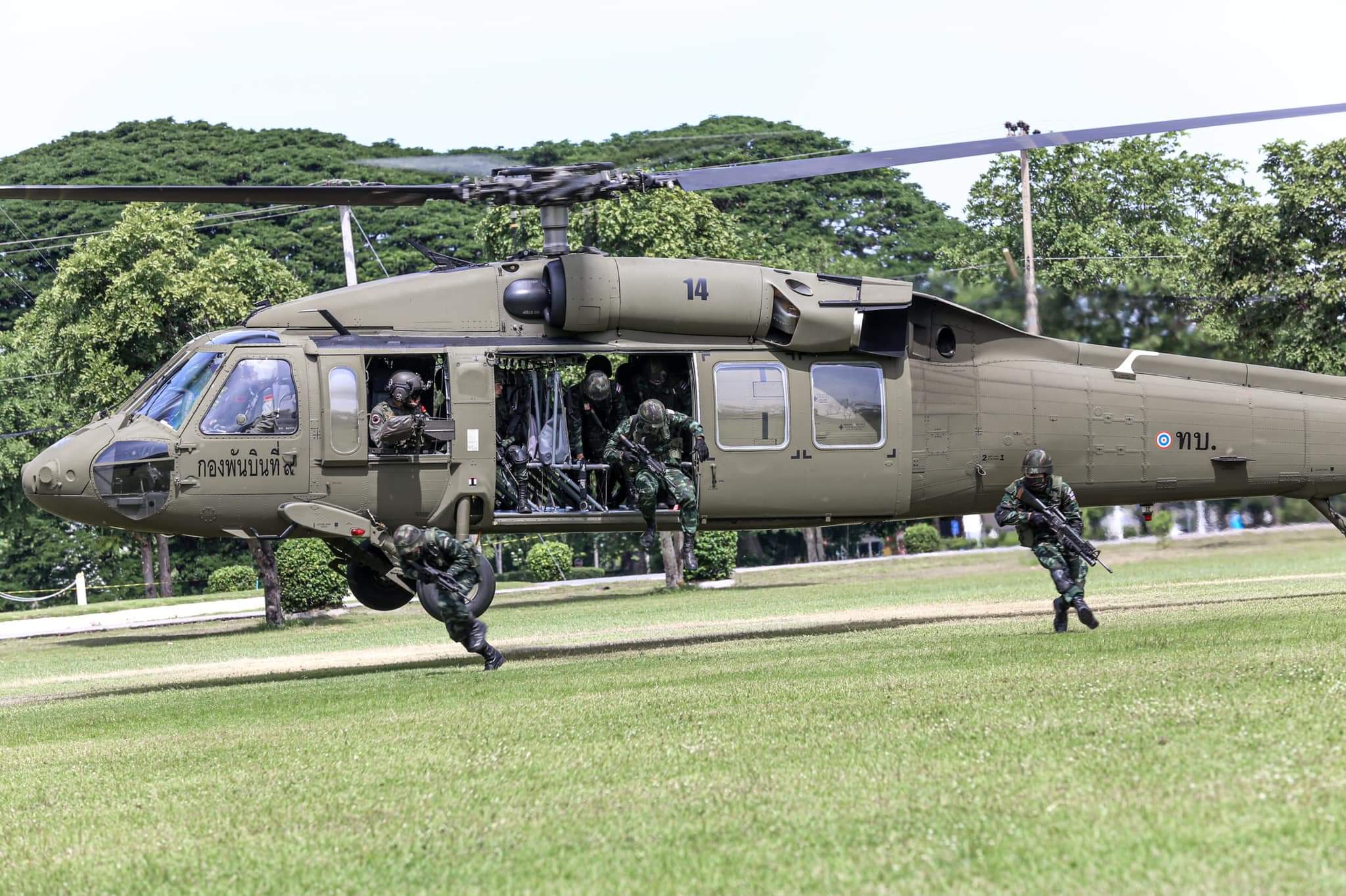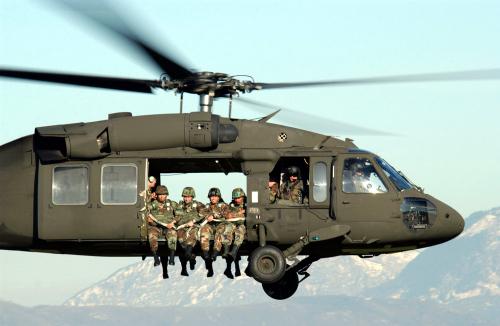Discover the Key Includes That Make the UH-60 Blackhawk a Top Option for Armed Force
Discover the Key Includes That Make the UH-60 Blackhawk a Top Option for Armed Force
Blog Article
Find Out About the Versatility of the UH-60 Blackhawk
The UH-60 Blackhawk is an exceptional example of modern-day army engineering, embodying convenience throughout a vast array of operational contexts. From troop transport to medical emptying and reconnaissance objectives, its style accommodates different functions while highlighting fast deployment and versatility. The sophisticated avionics and robust abilities of the Blackhawk not only boost its functional performance in tough atmospheres yet additionally expand its energy in altruistic initiatives. Understanding its multifaceted applications prompts a better examination of just how this helicopter proceeds to advance and affect military and private procedures alike.
History of the UH-60 Blackhawk
The UH-60 Blackhawk, a versatile energy helicopter, was established in the late 1970s by Sikorsky Airplane to meet the united state Army's requirement for a contemporary tactical transport helicopter. This campaign developed in response to the constraints observed in the previous generation of helicopters during the Vietnam Battle. The U.S. Military sought an aircraft that can do a variety of missions, consisting of troop transportation, medical evacuation, and logistical support, while additionally exhibiting boosted survivability and performance.
The Blackhawk was developed with innovative modern technology and engineering, including a twin-engine setup, a four-bladed rotor system, and a robust airframe. Its initial flight occurred in 1974, and it was formally introduced right into solution in 1979, rapidly ending up being a crucial asset for the united state armed force. The helicopter's versatility permitted it to be utilized in different battle and humanitarian procedures, showcasing its performance in diverse settings and objectives.
Over the years, the UH-60 has gone through continual upgrades and modifications, guaranteeing its importance in modern warfare. Its legacy has actually strengthened its status as a foundation of armed forces aviation, showing a commitment to advancement and operational excellence.
Key Features and Specs
Regularly lauded for its design prowess, the UH-60 Blackhawk boasts a variety of vital features and requirements that enhance its operational abilities. This flexible helicopter is powered by two General Electric T700-GE-701C engines, each efficient in producing 1,800 shaft horsepower, enabling it to attain an optimum cruise ship speed of around 150 knots.
The aircraft's distinctive style consists of a four-blade primary rotor system and a four-blade tail blades, adding to superior maneuverability and stability. With an optimum departure weight of 22,000 extra pounds, the UH-60 can lug approximately 11 soldiers or equivalent freight. Its innovative avionics collection gives improved situational awareness and navigating, vital for different goal profiles.
The Blackhawk includes a robust airframe created from sophisticated composite products, providing enhanced toughness and resistance to tiny arms fire. UH-60 Blackhawk. In addition, the helicopter is furnished with a digital fly-by-wire control system, boosting responsiveness and lowering pilot work. With a variety of roughly 600 maritime miles and the capacity to run in varied atmospheres, the UH-60 Blackhawk stays a critical asset in modern-day armed forces procedures
Military Applications
With its innovative functions and specifications, the UH-60 Blackhawk has actually become a foundation of armed forces operations throughout the world. Made for convenience, it satisfies a broad selection of duties ranging from troop transport to medical evacuation. The helicopter's capacity to operate in varied atmospheres-- whether in battle zone or tough terrains-- ensures it stays a crucial possession for modern-day military pressures.
The UH-60's robust design permits the transport of as much as 11 troops, sustaining fast implementation during essential objectives. Its sophisticated avionics and navigation systems boost situational awareness, enabling pilots to carry out complicated operations even in damaging weather. Additionally, the helicopter is equipped with defensive systems to secure against threats, making certain the safety of workers onboard.

Altruist Missions

Humanitarian goals commonly depend on the UH-60 Blackhawk for its unparalleled adaptability and rapid reaction abilities. This multi-role helicopter has actually confirmed important in numerous situations, consisting of calamity relief, clinical evacuations, and logistics sustain in remote or inaccessible areas - UH-60 Blackhawk. Its ability to transfer supplies and workers promptly allows for prompt interventions throughout crises, substantially boosting the continue reading this efficiency of humanitarian procedures
The Blackhawk's innovative avionics and durable style allow it to run in challenging atmospheres, such as damaging climate condition or rugged terrains. Geared up with raising systems and clinical evacuation capabilities, the helicopter can get damaged individuals from hard-to-reach locations, making sure punctual clinical focus. In addition, its capability to quickly deploy help products, including food, water, and crucial tools, makes it an important property in large-scale alleviation efforts.
Furthermore, the UH-60 Blackhawk's flexibility enables numerous configurations tailored to certain redirected here goal demands, whether it includes moving emergency situation responders or supplying important resources to afflicted populaces. Its functional history in altruistic objectives underscores the aircraft's vital role in saving lives and minimizing suffering during humanitarian dilemmas and natural disasters, showcasing its withstanding commitment to sustaining worldwide alleviation initiatives.
Future of the Blackhawk
The future of the UH-60 Blackhawk appears encouraging as improvements in modern technology and evolving mission requirements shape its continued relevance in armed forces and noncombatant operations. As militaries around the world look for to modernize their fleets, the Blackhawk is going through upgrades that enhance its capacities, including enhanced avionics, advanced interaction systems, and enhanced payload capacities.
The assimilation of unmanned systems and artificial knowledge is poised to transform operations. Future variants may integrate independent flight capabilities, enabling enhanced operational flexibility and decreased risk to personnel throughout high-threat missions. Furthermore, hybrid-electric propulsion systems are being explored to improve fuel effectiveness and decrease the ecological footprint of armed forces procedures.
International collaborations and export possibilities are likewise increasing the Blackhawk's worldwide impact. As nations invest in improving their air movement abilities, the Blackhawk's versatility makes it a beneficial selection for various duties, from troop transport to medical emptying and search-and-rescue operations.
Final Thought
The UH-60 Blackhawk exemplifies flexibility in army aviation, efficiently meeting roles ranging from army transport to clinical discharge and reconnaissance. As functional needs develop, the ongoing development and combination of the Blackhawk will ensure its significance and performance in attending to future obstacles in both private and military contexts.

With its advanced attributes and specifications, the UH-60 Blackhawk see has come to be a keystone of military operations across the world. As armed forces approaches progress, the UH-60 Blackhawk proceeds to play a vital role in improving operational effectiveness and guaranteeing objective success across the movie theaters of interaction.
Humanitarian missions often depend on the UH-60 Blackhawk for its exceptional adaptability and quick reaction capacities. UH-60 Blackhawk.The UH-60 Blackhawk exemplifies adaptability in army aeronautics, efficiently satisfying duties varying from troop transportation to clinical evacuation and reconnaissance
Report this page